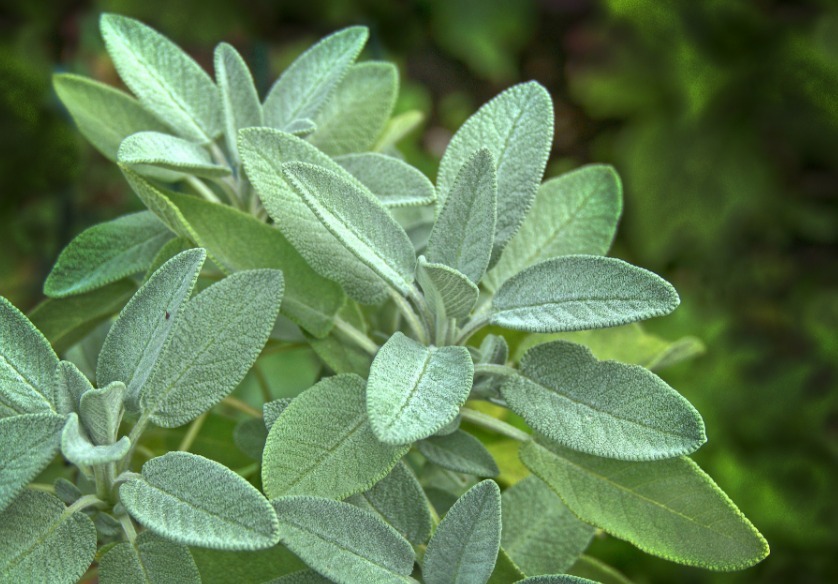Sage Plant (Salvia officinalis) Amazing Health benefits
The sage plant is a common name for Salvia officinalis, a perennial herb that belongs to the mint family. It has grey-green leaves and blue-purple flowers that are used for culinary and medicinal purposes. The sage plant is native to the Mediterranean region, but it has been naturalized in many parts of the world. Some of the benefits of the sage plant are:
- It can enhance the flavour and aroma of various dishes, such as meat, poultry, cheese, bread, and tea.
- It can help with digestive problems, such as indigestion, gas, bloating, and diarrhoea.
- It can lower blood sugar and cholesterol levels, and improve insulin sensitivity.
- It can boost memory and cognitive function, and protect the brain from oxidative stress and inflammation.
- It can fight against bacterial, fungal, and viral infections, and support the immune system.
- It can reduce the symptoms of menopause, such as hot flashes, night sweats, and mood swings.
- It can soothe the sore throat, cough, and cold, and act as an expectorant.
The Chemical Properties of the Sage Plant
The chemical properties of the sage plant depend on its chemical composition and structure, and how it reacts with other substances, such as water, oxygen, or enzymes. Some of the chemical properties of the sage plant are:
- Molecular weight: The molecular weight of the sage plant’s polysaccharides, which are the main components of its soluble fibre, ranges from 200,000 to 5,800,000 Da, depending on the degree of polymerization and branching. The higher the molecular weight, the higher the viscosity and water-holding capacity of the sage plant.
- Solubility: The sage plant’s polysaccharides are soluble in water, but insoluble in organic solvents. The solubility of the sage plant depends on the temperature, pH, and ionic strength of the solution. The sage plant is more soluble at higher temperatures, lower pH, and lower ionic strength.
- Viscosity: The sage plant’s polysaccharides have a high viscosity, which means they can resist the flow of liquids. The viscosity of the sage plant depends on the concentration, temperature, pH, and shear rate of the solution. The sage plant has a higher viscosity at higher concentrations, lower temperatures, lower pH, and lower shear rates.
- Swelling: The sage plant’s polysaccharides have a high swelling capacity, which means they can absorb water and expand in volume. The swelling of the sage plant depends on the water availability, temperature, pH, and ionic strength of the solution. The sage plant can swell up to 40 times its original weight in water.
- Gelation: The sage plant’s polysaccharides can form a gel-like substance when they interact with water. The gelation of the sage plant depends on the concentration, temperature, pH, and ionic strength of the solution. The sage plant can form a gel at concentrations above 1.5%, temperatures below 60°C, pH below 6, and ionic strength below 0.1 M.
The chemical properties of the sage plant have many applications in the food, pharmaceutical, and cosmetic industries, due to their health benefits and functionality. The sage plant can improve the texture, stability, and shelf-life of food products, such as bread, cakes, cookies, ice cream, yoghurt, and beverages. The sage plant can also act as a laxative, a cholesterol-lowering agent, a blood glucose regulator, and a prebiotic, among other effects
Using The Sage Plant As a Herb
The sage plant is a versatile herb that can be used for various culinary and medicinal purposes. Here are some ways to use sage plants as herbs:
- Fried sage: You can fry fresh sage leaves in oil or butter until they are crisp and golden. Fried sage can be crumbled over a dish to heighten flavor at the last moment, or used as a garnish. Fried sage pairs well with pasta, risotto, squash, potatoes, cheese, and meat
- Sage tea: You can brew fresh or dried sage leaves in hot water to make a soothing and aromatic tea. Sage tea can help with digestive problems, sore throat, cold, and menopause symptoms. You can add honey, lemon, or other herbs to enhance the taste and benefits of sage tea.
- Sage butter: You can melt butter in a saucepan and add chopped fresh or dried sage leaves. Sage butter can be drizzled over roasted vegetables, meat, fish, or bread. Sage butter can also be used to make a simple and delicious sauce for pasta or gnocchi .
- Sage stuffing: You can add chopped fresh or dried sage leaves to your favourite poultry stuffing recipe. Sage stuffing can be cooked inside or outside the bird, or baked in a casserole dish. Sage stuffing adds a savoury and earthy flavour to turkey, chicken, or duck.
- Sage candy: You can make a natural remedy for sore throat and cough by making sage candy. You can boil sugar, water, honey, and fresh or dried sage leaves until they reach a hard-crack stage. Then you can pour the mixture into a baking sheet and let it cool. You can break the candy into pieces and store them in an airtight container. You can suck on a piece of sage candy whenever you need some relief.
- Sage vinegar: You can infuse vinegar with fresh or dried sage leaves to make a flavorful and versatile condiment. Sage vinegar can be used to make salad dressings, marinades, sauces, or pickles. You can also add other herbs, spices, or fruits to the vinegar for more variety.
- Sage oil: You can extract the essential oil from fresh or dried sage leaves by using a distillation method. Sage oil can be used for aromatherapy, massage, or skincare. Sage oil has antibacterial, anti-inflammatory, and antioxidant properties. You can also mix sage oil with other carrier oils or essential oils for different purposes.
- Sage salt: You can make a simple and flavorful seasoning by mixing salt with chopped fresh or dried sage leaves. Sage salt can be used to season meat, poultry, fish, vegetables, or popcorn. You can also add other herbs or spices to the salt for more flavour.
- Sage honey: You can infuse honey with fresh or dried sage leaves to make a sweet and herbal spread. Sage honey can be used to sweeten tea, yoghurt, oatmeal, or toast. Sage honey can also help with sore throat, cough, or cold .
- Sage pesto: You can make a fresh and nutty sauce by blending fresh sage leaves with garlic, pine nuts, parmesan cheese, and olive oil. Sage pesto can be used to dress pasta, pizza, sandwiches, or salads. You can also freeze sage pesto in ice cube trays for later use.
- Sage cocktail: You can add fresh sage leaves to cocktails and teas for an instant hit of herbal flavour. Sage cocktails can be made with gin, vodka, rum, or whiskey. You can also muddle sage leaves with sugar, lemon, or lime to make a refreshing and aromatic drink
Side effect of the sage plant
Sage plant is generally safe and well-tolerated, but it may cause some side effects, such as:
- Gas and bloating: These are common side effects that may occur when you start taking sage plant, as your body adjusts to the increased fibre intake. They usually go away after a few days or weeks. You can reduce them by drinking plenty of water, starting with a low dose, and gradually increasing it.
- Diarrhea or constipation: These are rare side effects that may occur if you take too much or too little sage plant, or if you have a sensitive digestive system. You can prevent them by following the dosage instructions on the label, drinking enough water, and eating a balanced diet.
- Nausea and vomiting: These are very rare side effects that may occur if you are allergic to sage plants, or if you have a medical condition that affects your stomach or esophagus. You should stop taking sage plant and seek medical attention if you experience these symptoms
- Allergic reactions: These are extremely rare but potentially serious side effects that may occur if you are hypersensitive to sage plant or any of its components. They may include rash, hives, itching, swelling, wheezing, difficulty breathing, or anaphylaxis. You should stop taking sage plants and seek emergency medical help if you experience these symptoms.
Sage plants can also interact with some medications, such as thyroid hormones, blood thinners, diabetes drugs, or cholesterol-lowering drugs. You should consult your doctor before taking sage plant if you are on any of these medications, or any other medications, to avoid possible interactions or reduced effectiveness. Sage plant is a natural and effective way to improve your health, but you should use it with caution and moderation.

